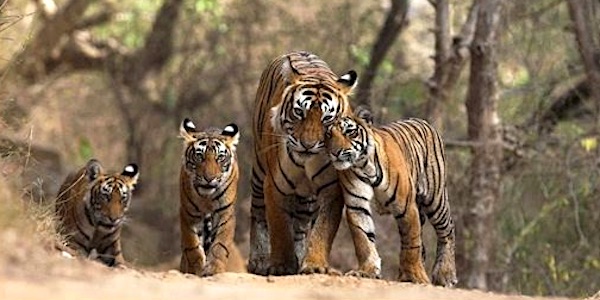West Bhutan & Manas National Park
Tour - 18 days
West Bhutan & Manas National Park
Tour - 18 days
About BHutan
Bhutan is not your average destination. And that’s the understatement of the century. For starters, it’s the only remaining Buddhist Himalayan kingdom, the only one that managed to escape assimilation by either China or India. Being only the size of Switzerland and having just over 700,000 inhabitants, that’s quite a feat in itself.
Bhutan is mainly known for its very original culture and nature. This is largely due to the centuries of isolation, but also to the deliberate policies of the present government and of the kings in the past. Until the seventies, hardly any foreigner ever had set foot in the secluded kingdom.
Read more…Read less…
HAPPINESS OVER WEALTH
However, in 1972, at the occasion of the crowning of king Jigmed Singye Wangchuk, many foreign guests were invited to Bhutan. Having studied in the U.K., the future king obviously saw it coming that especially the western guests would observe a discrepancy between their own standard of living and that of the Bhutanese. In his opinion, the Bhutanese were not poor, but merely lacking in some amenities and products available in the West, most of them non-essential. Otherwise, the Bhutanese were actually quite well off, he felt. Almost all of them had a beautiful, spacious farmhouse, more than enough forests, arable land and animals to be fully self-sufficient in terms of heating, construction and nourishment. And, most importantly, a culturally defined sense of identity, belonging and security that made most of them very content and happy beings. The king had observed otherwise in the west.
In order to explain this to his foreign guests, he coined the term ‘gross national happiness,’ a clever term obviously meant to be juxtaposed with what seemed to be the aim of most governments, a high gross national product. The rest is history, one could say. These days, all over the world, conferences and workshops are being held on happiness and, more in general, on how to develop and emphasize those qualities of life that can not be measured in dollars or euros.
Bhutan does not claim that its inhabitants are the happiest in the world, but it does place overall happiness above wealth. These days, GNH, as it is generally referred to, is the formal pillar and yardstick of all government policies. After the king abdicated his powers in favor of a democratically elected government, Bhutan has seen four governments. All of them have continued to place GNH above anything else.
As a result, Bhutan has protected its culture – largely defined by Buddhist beliefs – but also its forests, mountains, rivers and wildlife much better than any other country in Asia. Key to all this is a reliable, non-corrupt government, which itself is one of the four pillars of GNH and, frankly, quite the exception in the region.
On your trip through Bhutan you will see numerous temples, monasteries and dzongs (monastery castles), better preserved and more lavishly decorated than anywhere else in the ‘Tibetan’ realm. Not less impressive, if alone because of their rustic beauty, are the many traditional houses, as well as meeting the friendly, warm-hearted people who embrace their culture as a precious heritage.
Read more…Read less…
Bhutan is also extremely mountainous and rich in nature, especially forest – in fact, it is the most wooded country in Asia. The southern border consists of hills and low mountains with dense jungle where elephants and tigers roam, and people live in bamboo houses surrounded by rice fields. This where Royal Manas N.P. is situated, and where you’ll end your trip. But in the central highlands, at an altitude of 1500 – 2500m, people live in small enclaves of farms reminiscent of Swiss chalets, surrounded by endless semi-deciduous and coniferous forests. Travelling through this area (and when you fly over it) you will occasionally catch a glimpse of the northern and highest parts, where the semi-nomadic yak shepherds live and which are bordered by glacier-covered Himalayan peaks. The only way to see all this up-close is to set out on a seven-day (or more) camping trek.
Region
Ladakh
(India)
Best Time
March-April & Oct.-Nov.
No. Of Days
18 days
Trip Character
Jeep tour with walks
Sleeping Altitude
220 - 2900 m.
Price
INR XXX/ $ XXX
ABOUT THIS TOUR
On this trip you will first visit Paro where the international airport is located. The next day you will drive up the Chele La, the highest autopas of Bhutan, where you will get a beautiful view of the Himalayas when the weather is good.
Descending from the pass, you’ll reach the lovely valley of Haa. You’ll spend a full day here, exploring temples and remote villages on foot. Along an other, utterly picturesque route, you’ll reach Paro again, where you will do the almost compulsory walk to Taktsang Goemba, better known as ‘Tigersnest’. This iconic little temple clings to the rocks like a swallow’s nest, 900m above Paro Valley.
Read more…Read less…
The next day, a short drive will take you Bhutan’s capital, Thimphu. Labeled the world’s most relaxed capital, this mini-city has an utterly pleasant atmosphere and a lot of sights to explore. After two nights in Thimphu, you travel eastward, first to the low lying valley of Punakha. Its magnificent dzong was the seat of king and parliament until 1955. Next, you’ll travel up to idyllic Phobjikha Valley, situated at 2900m and home to a large population of black-necked cranes, the national bird of Bhutan.
Traveling along steep and densely forested mountainsides teeming with birds and cicadas and tiny time-warped villages, you reach Trongsa, with its elongated dzong. Going south from here along a seldom traveled route you reach Zhemgang. In March you can attend a Buddhist festival here, possibly the highlight of your journey. Descending to the Himalayan foothills, you enter the twin parks of Royal Manas N.P. (in Bhutan) and Manas N.P. (in India). Here, you’ll encounter a dazzling array of beautiful birds, rare species such as the Hoolock Gibbon, one-horned Indian rhino’s, wild buffalos and wild elephants, and who knows a tiger. You exit Bhutan to Assam (India) from the border town of Samdrup Jongkhar and fly back from Guwahati to Delhi.
YOUR custom-made TRIP
The tour described here, as well as the other ones on our website, are mainly meant as suggestions. We would be happy to offer you a travel proposal that fully meets your personal demands and expectations. That means that you choose where you want to go, what level of accommodation and type of transport you want and what activities you prefer.
Please let yourself be inspired by this and other trips on our website and then drop us a line (or call us) to explain your travel wishes. We will be happy to help you put together the perfect trip. You can reach us over e-mail, Messenger, Whatsapp or mobile phone.
EXTENSIONS & VARIATIONS
Apart from the tour as described here, you could consider the following add-ons and changes:
- Spend another day in Thimphu, for instance at the end of the tour. Because, although Thimphu is by far Bhutan’s most ‘mundane’ place, it has a lot to offer in terms of culture, restaurants and cafes, shopping, and a very pleasant atmosphere.
- Do a short trek which takes of the beaten track, along time-warped villages and high yak pastures. For instance a two-day trek in Bumthang, from Jakar to Tang and over de Phephe La (pass) to Nang Lhakhang. Or the three-day Saga La Trek from Haa upto the Che La pass. On longer treks (seven days minimum) you can get up-close with the Himalayan giants, such as Mt. Jhomolhari (7326m). For the latter, see here.
- Spend a day rafting on the Punakha River. There are different grades available, so there is the easy-but-fun-to-do level as well. Professional oarsmen will be with you in any case. You will be picked up from your hotel and dropped off there again at the end of the day, a pic-nic lunch is included.
ITINERARY
-
.fa-info {color: #1146a9;}.fa-info:hover {color: #387dff;}Day 1: Delhi ✈︎ Paro
The flight to Paro (Bhutan) takes less than 2,5 h and, in clear weather, affords wonderful views of the Himalayas, including Mt. Everest (8848m) and Kangchenjunga (8568m). The guide and driver take you to your hotel in Paro. Depending on the arrival time of the flight there is time to visit some sights in Paro. Altitude 2250m. -
Day 2: Paro - Chele La - Haa
We drive halfway up the Chele La pass (3988m, la=pass). From there, we climb on foot to Kila Goemba, a nunnery (goemba=monastery), and in a gradual ascent we reach Chele La, marked by a multitude of prayer flags (1.5 h walk). We descend to the Haa valley and visit the temple of Nagpo. Altitude 2280 → 3988 → 2670m. -
Day 3: In Haa
Today you'll take several short walks in the countryside, visiting rustic villages and climbing up to small, hidden monasteries. -
Day 4: Haa - Paro
Today you return to Paro along a different route, one of Bhutan's most scenic drives. The afternoon can be spent on visiting pleasant centre of Paro, the dzong and adjacent National Museum or maybe the medieval Kyichu Lhakhang (temple). A dzong is a uniquely Bhutanese and Tibetan phenoma. It is a monastery, district administration office and (in the past) military fort at once. . Altitude 2670 → 2250m. -
Day 5: Paro: walk to Tigersnest Temple & transfer Thimphu
Today you do the hike to the famous Taktsang Goemba, better known as Tiger’s Nest. It's 2.5 h walking up and 1.5 h down, but the magical little temple is worth it. Altitude 2250 → 3120 → 2250m. -
Day 6: At Thimphu
You have all day to explore Thimphu. Besides the many possibilities listed in the two highlights you can visit the archery range and the animal park with the takin, the national animal of Bhutan, a cross between cow, moose and goat. Or you can walk to a nearby monastery in the woods with beautiful views. Altitude 2350m. . -
Day 7: Thimphu - Punakha (2.5 h)
Driving eastwards over the only road that connects the capital with middle and East of Bhutan you'll cross the 3120m high Dochu La (‘La’ = ‘pass’). Here, you get beautiful views of the Himalayas, before descending to the relatively warm Punakha valley. Altitude 1400m. -
Day 8: In Punakha
Today, you'll explore several sights of Punakha, most importantly Punakha's magnificent dzong. Altitude 1400m. -
Day 9: Punakha - Phobjikha
Traveling further to the east, you reach the beautiful, high valley of Phobjikha. Altitude 1400 → 2900m. -
Day 10: In Phobjikha
Phobjikha is a protected conservation area where black-necked cranes live. On a walk through the valley you hopefully will see the cranes. And you visit Gangte Goemba, belonging to the Nyingmapa, the oldest Buddhist sect in Bhutan and Tibet. Altitude 2900m. . -
Day 11: Phobjikha - Trongsa (3.5 h)
Early morning we start a 3-hour walk crossing the Phobjika Mountains with splendid views of Trongsa Valley, and weather permitting, of the Himalayas. After the descent the car picks us up for the journey to Trongsa, with a magnificent dzong and museum. Altitude 2900 → 2180m. -
Day 12: At Trongsa
You can visit the dzong and museum – if not done the day before – and go to the interesting village of Kuenga Rabten with the former winter palace of the 2nd king, now a lama school. In addition you can take a short walk up to a nunnery. Altitude: 2180m. -
Day 13: Trongsa - Zhemgang (5 - 6 h)
Following Trongsa river we drive down south to remote and little visited Zhemgang. On the way you might see golden langurs (endemic monkeys) swinging in the trees. On March 21-23, 2021 Zhemgang will be the venue of a tshechu, a traditional Buddhist festival. Altitude 2180 → 600m. -
Day 14: In Zhemgang
If you here on the day of the Zhemgang Tshechu most of the day will be spent attending this festival. Else, we take a long walk in the nearby Black Mountains, part of the Jigme Singye Wangchuk N.P. Altitude 600m. -
Day 15: Zhemgang - Royal Manas N.P. (3 - 4 h)
Today we travel eastward, into the magnificent Royal Manas National Park. Overnight is at a very simple homestay in tiny Panbang, in the middle of the park. Late afternoon we take a short forest hike to spot birds. Altitude 600 → 220m. -
Day 16: In Manas N.P.
Today we cross the border into India, where jeeps will await us to take us further into Manas N.P. After a daylong exciting jeep safari in the wilderness we return to Panbang (Bhutan). Altitude 220m. -
Day 17: Manas N.P. - Gelephu (4 h)
We start with an early bird walk in the forest near Panbang, then drive back to Zhemgang, and from there south to Gelephu at the Indian border. Altitude 240 → 220m. -
Day 18: Gelephu - Guwahati& flight Guwahati ✈︎ Delhi (drive 5 h, flight 2 h)
After breief border formalities we enter Assam (India) and continue to Guwahati, where you can bord the flight to Delhi. If you have asked us to arrange accommodation and transfers in Delhi you will be picked up form the airport by our driver.
HIGHLIGHTS OF THIS TOUR
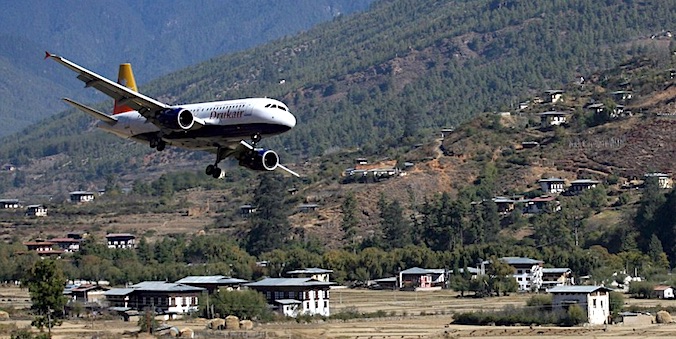
Flight to Paro
Paro
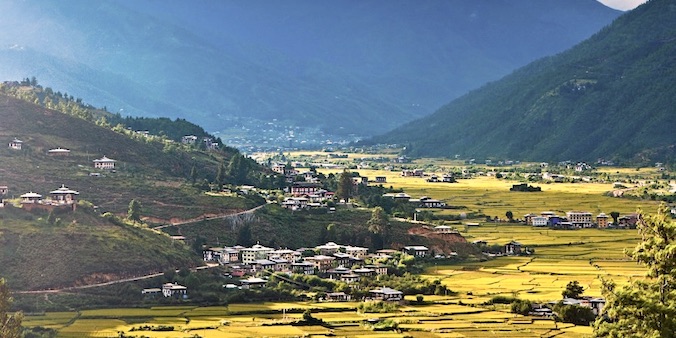
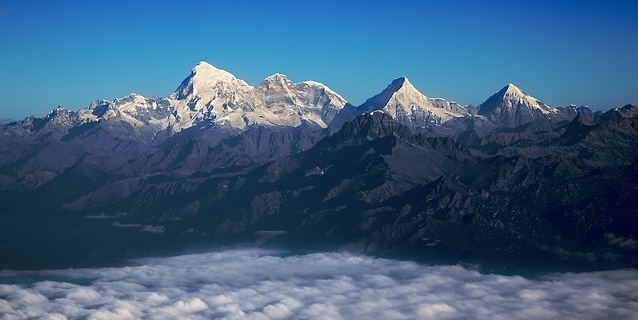
ROAD to HAA over CHELE LA
From the Paro Valley you climb to Bhutan’s highest motarable pass, the Chele La (3988m). The narrow road creeps up through magnificent forests of enormous cedars, spruces and larches, a well as tree-high rhododendrons (which normally bloom in April-May). Once up, weather permitting, you will be treated to beautiful views of the Himalayas, especially Mt. Jhomolhari (7329 m) right on the Tibetan border. The best view you get from the road, 100 m north of the pass. Descending, you reach the green-forested Haa Valley. It can be chilly here in the evening, but the wood stove in the resort is always on.
HAA
Although the flight takes only one hour, on a clear day this no doubt is one of the most spectacular flights in Asia. After leaving the North-Indian plains and the heavily forested hills you’ll cross a number of ranges before flying over the actual glacier-clad Himalayas, the highest mountain range in the world. You’ll be amazed at the different landscapes you’ll see beneath you on the other side: bare, lightly coloured mountains, tiny rivers, small hamlets of Ladakhi farms surrounded by deep-green fields of barley, made possible by ingenious forms of irrigation.
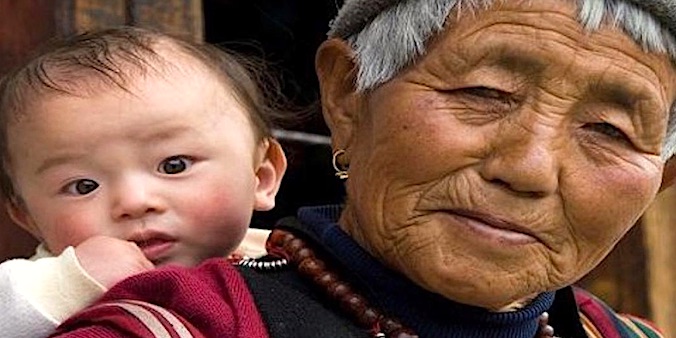
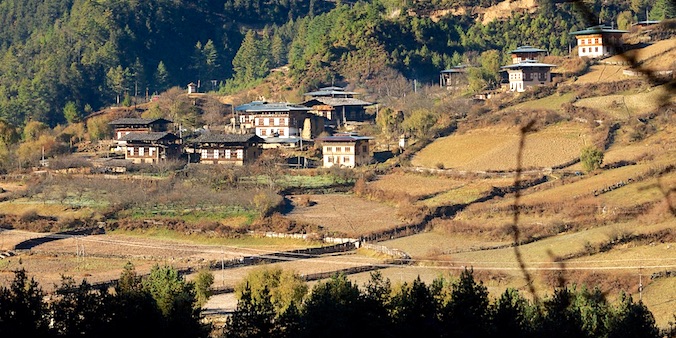
Road HAA - CHUZOM
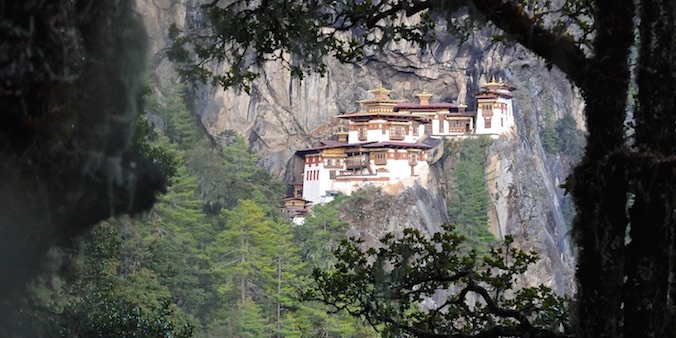
TakTsang Goemba (Tigersnest)
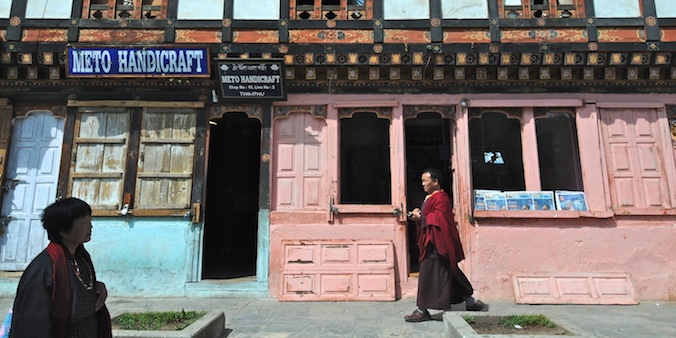
Thimphu
Sights of Thimphu
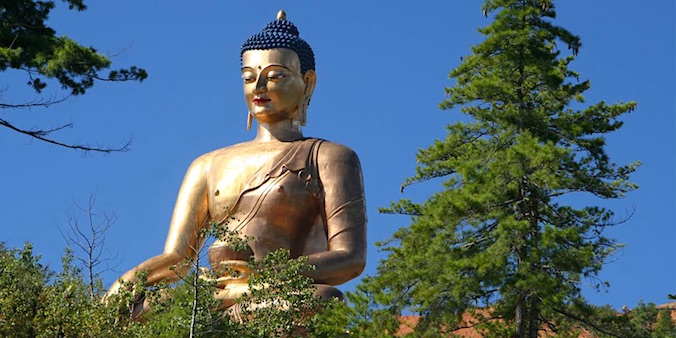
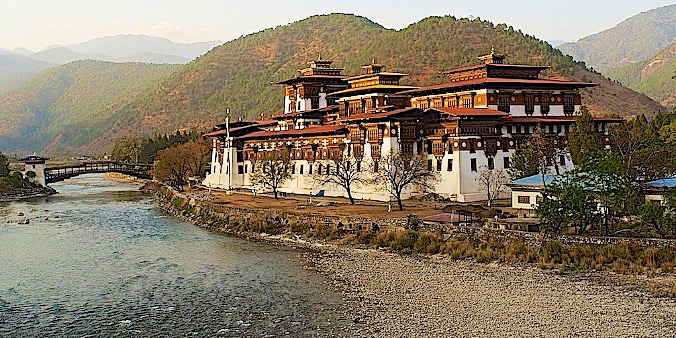
Punakha Dzong
Punakha - Other Sights
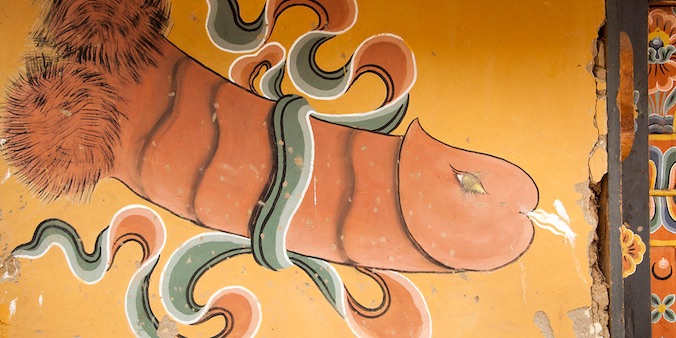
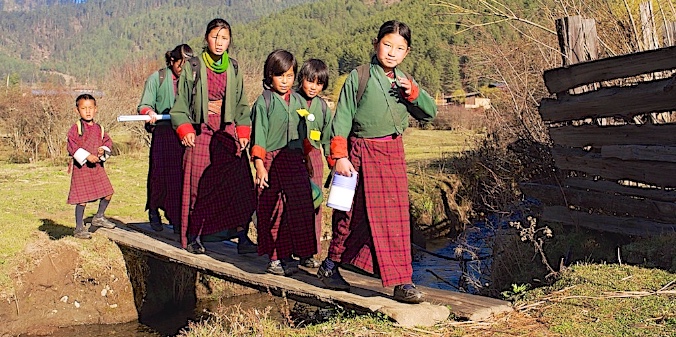
Phobjikha
Walks at Phobjikha
Phobjikha is not just a protected area, it is walkers paradise as well. Th three main valleys that converge near Gangte, where you will stay, offer gently sloping mountain sides with meadows and forests teeming with birds, interspersed with small hamlets of traditional farms. On the day you’re leaving Phobjikha, you’ll be offered the option of trekking rather than driving out. In case you are traveling west, you climb and then cross a pass to the northeast. You’ll get splendid views of Trongsa Valley, and, wheather permitting, of the Great Himalayan Range. After descending down to the road, the car will pick you for the onward journey. If you’re traveling west, you can take a similar walk, crossing a pass and descending through a magnificent rhododendron forest to the road to Punakha.
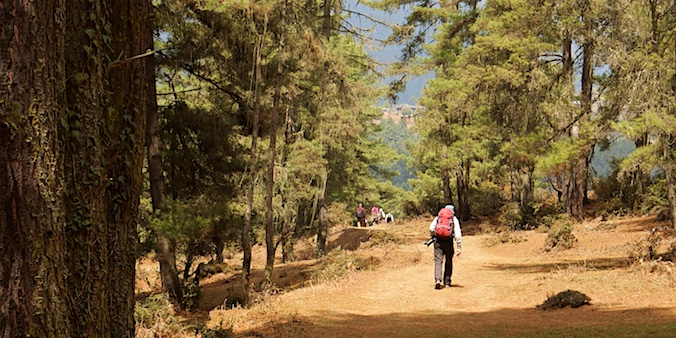
Trongsa Dzong
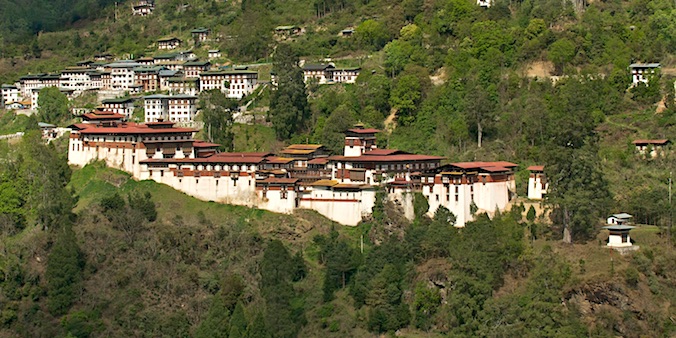
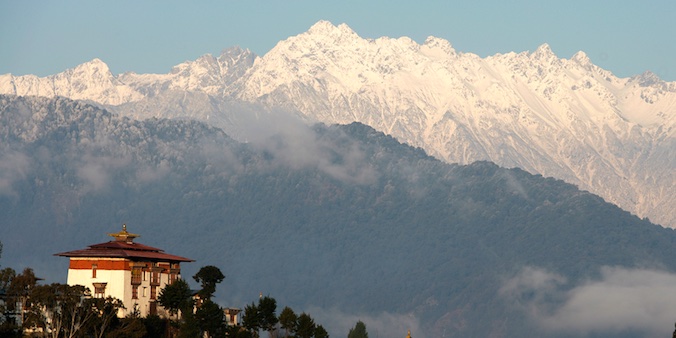
Zhemgang
Zhemgang is located in the middle of south Bhutan, bordering Assam in India. It is the capital of the Dzongkhag (province) with the same name, but other than administrative instutions, schools etc, it is just a quiet hamlet surrounded by small villages of self-sustaining farmers. In terms of religion, the area stands out, though, as it has seizable population of Bon followers. This ancient, basically animist religion, predates Buddhism and was absorbed into the latter in most places where Buddhism took hold. Bon priests known as Bonpo (singular Bonpa) are revered here and considered religious leaders.
Zhemgang Tshechu
The Zhemgang Tshechu, held annually is a spiritual and cultural festival dedicated to Guru Rinpoche, the Buddhist saint who brought Vajrayana Buddhism to Bhutan. Known for its sacred Cham dances, rituals, and community gatherings, the festival offers a unique experience for both locals and visitors. Its remote location makes it a hidden gem for those seeking an authentic Bhutanese celebration. Originating centuries ago, the festival aims to promote peace and faith among the people. Key features include sacred Cham dances, where monks and laypeople reenact Buddhist stories and perform rituals to purify sins. The dances represent the triumph of good over evil.
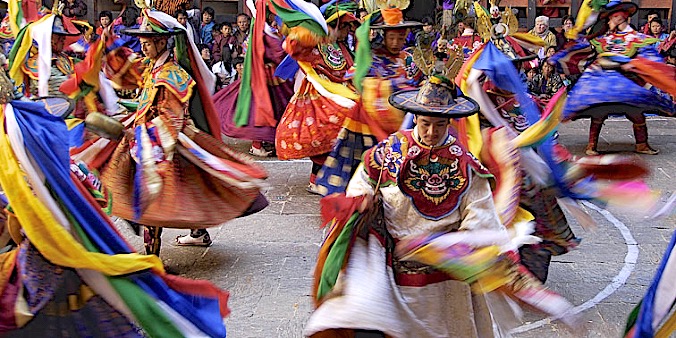
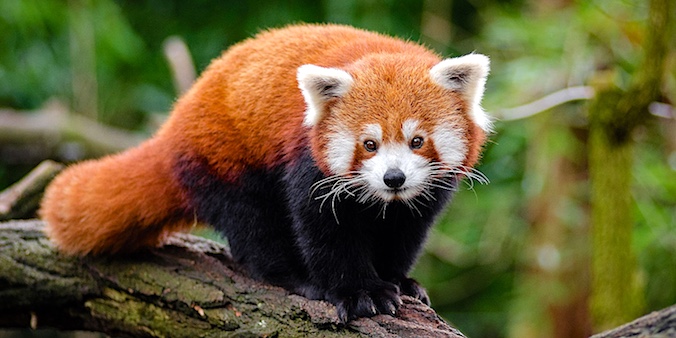
Royal Manas National Park
Manas National park
